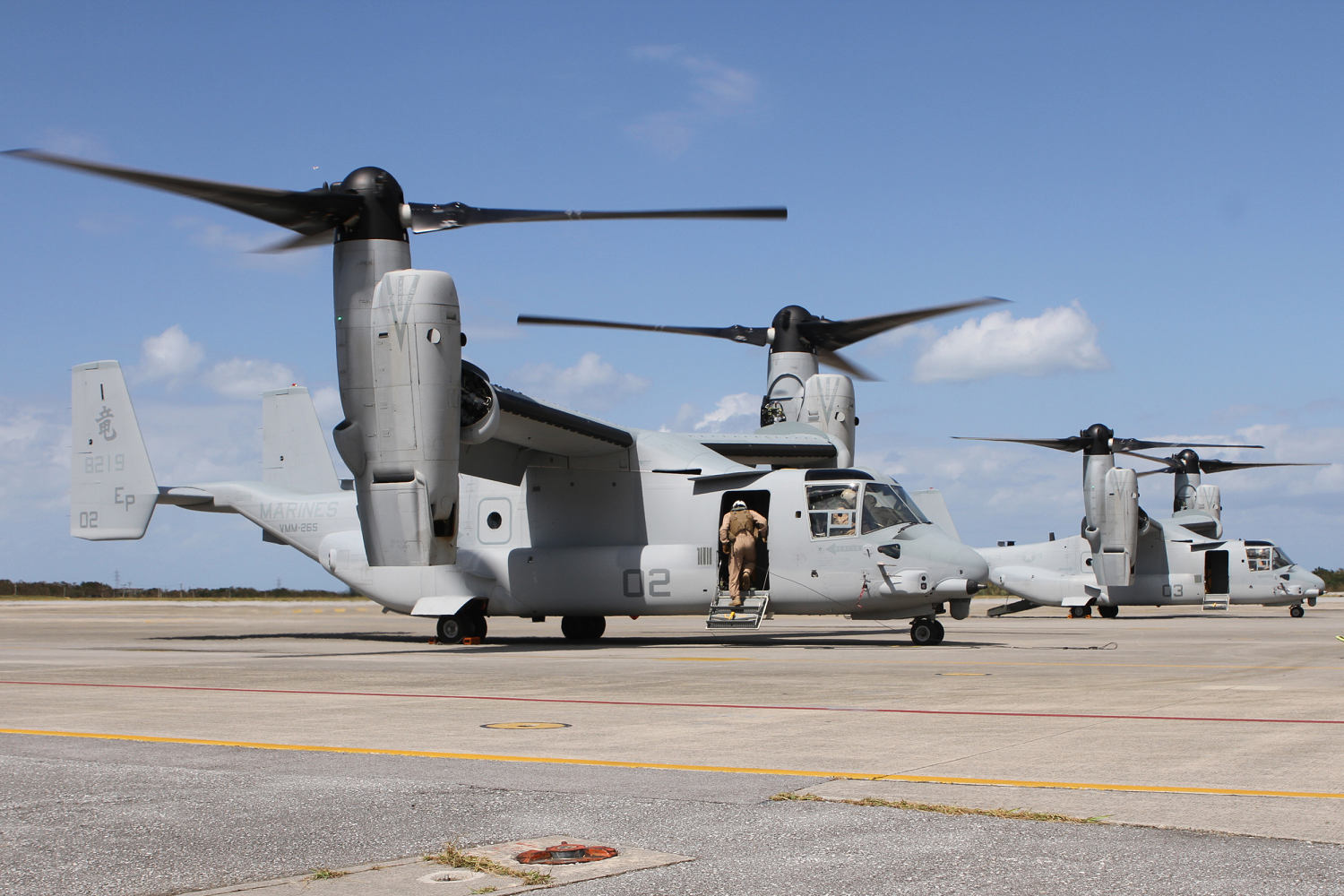Military clears Ospreys to fly again after a series of fatal crashes

The U.S. military said Friday that despite a series of fatal crashes, it has deemed the V-22 Osprey aircraft safe to fly and has lifted the order that had kept most of the military’s fleet of about 400 Ospreys grounded.
Naval Air Systems Command (NAVAIR) ordered the entire Osprey fleet grounded more than three months ago, following the fatal Nov. 29 crash of an Air Force CV-22 Osprey off the coast of Japan that killed eight Special Operations airmen. It was the fourth fatal crash of the unique twin tiltrotor aircraft in less than two years, in which 20 U.S. service members have been killed.
The crash remains under investigation, but last month NBC News reported that investigators have zeroed in on a failure in the aircraft’s proprotor gearbox.
While officials from NAVAIR say that the crash was likely due to a material failure and they have identified the part that failed, they will not yet announce the finding publicly or disclose the timeline of events that led to the crash. During a media briefing earlier this week, officials acknowledged they are not certain why the part failed.
Col. Brian Taylor, the program manager for the V-22 Joint Program Office, which oversees Osprey use by all service branches, said that this is the first time the office has seen this particular component fail, calling it “unprecedented.”
But military officials said they are confident they can mitigate the failure by implementing new procedural changes. Pentagon officials say there will be operational limitations on the aircraft to enhance safety but details on the limitations were not disclosed.
In a statement, NAVAIR said the decision to return to flight “follows a meticulous and data-driven approach prioritizing the safety of our aircrew.”
Some families of service members who died in the crashes remain skeptical of returning the aircraft to flight when the military does not know why the Osprey crashed in Japan.
The Government Accountability Office and members of Congress have been investigating the Osprey program. In a statement, House Oversight Committee Chairman James Comer, R-Ky., said, “The House Oversight Committee has yet to receive adequate information requested from DOD as part of our ongoing investigation launched months ago into the safety and performance of the Osprey aircraft. Serious concerns remain, such as accountability measures put in place to prevent crashes, a general lack of transparency, how maintenance and operational upkeep is prioritized, and how DOD assesses risks.”
As the military continues to investigate, the services will take a phased approach to return to flight, each with varying timelines before all of their aircraft are back in the air.
Ospreys are flown by the Marines, the Navy and the Air Force. The great majority belong to the Marine Corps, which uses them for three-quarters of its movement of troops and equipment during operations.
The Marine Corps is calling its approach to return to flight “crawl, walk, run.” It will happen in three phases, beginning with “extensive maintenance checks” and refresher training for pilot instructors for the first 30 days. The entire return to flight plan should be complete in late spring or early summer, according to a Marine Corps statement.
Read More: Military clears Ospreys to fly again after a series of fatal crashes

